Dynamic Variables
Omni content can be made more dynamic by using the Mustache syntax to insert variables in different areas of the product - text tiles, dashboard titles, axis labels, and many more. Dynamic sections can read in variables like filters used, and do basic lookups into the query payload.
Here are a few examples (text tiles showing filters, axis with summary stats that shows filters):
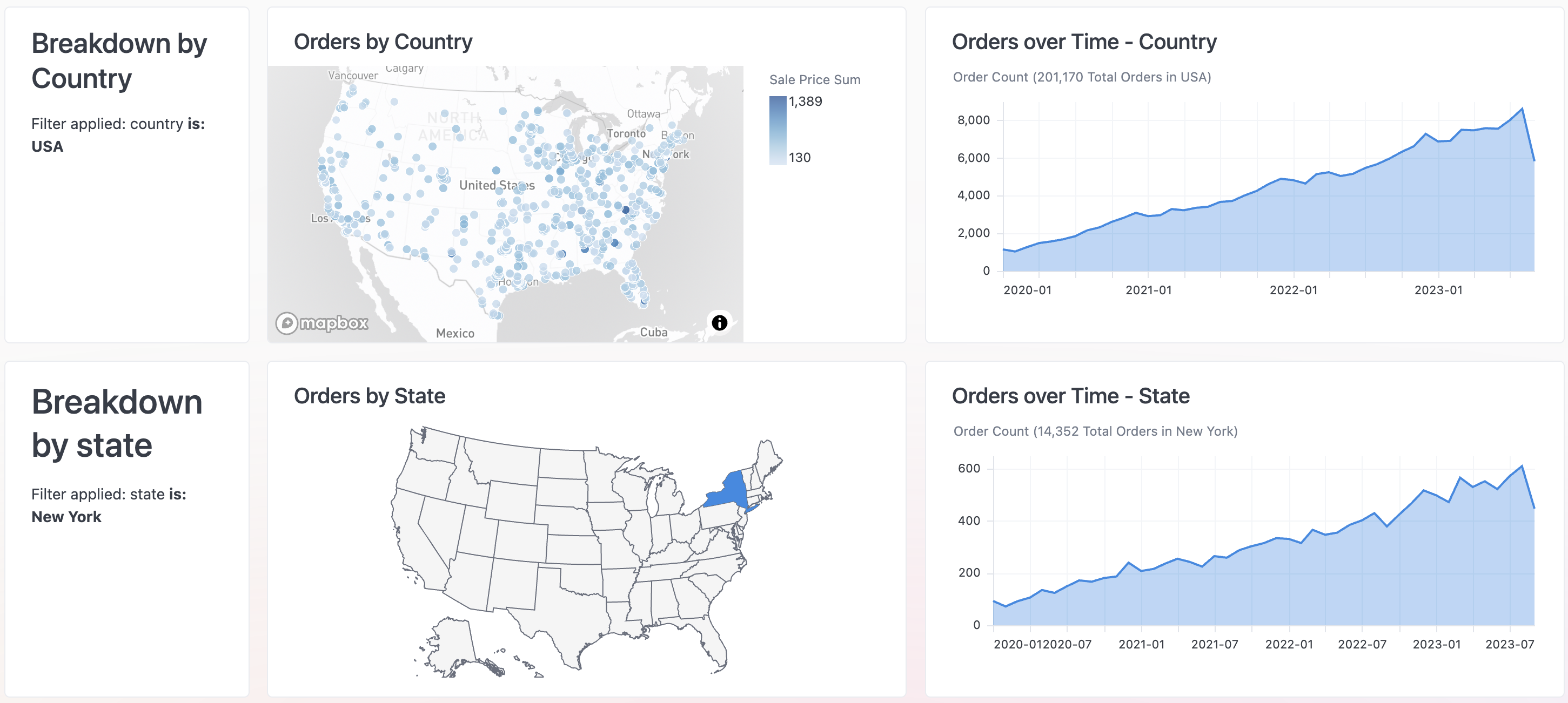
Text Tiles
From the dashboard text tiles can be made to dynamically reference filters that have been selected:
## Breakdown by Country
Filter applied: country **{{filters.users.country.summary}}**
# Breakdown by state
Filter applied: state **{{filters.users.state.summary}}**
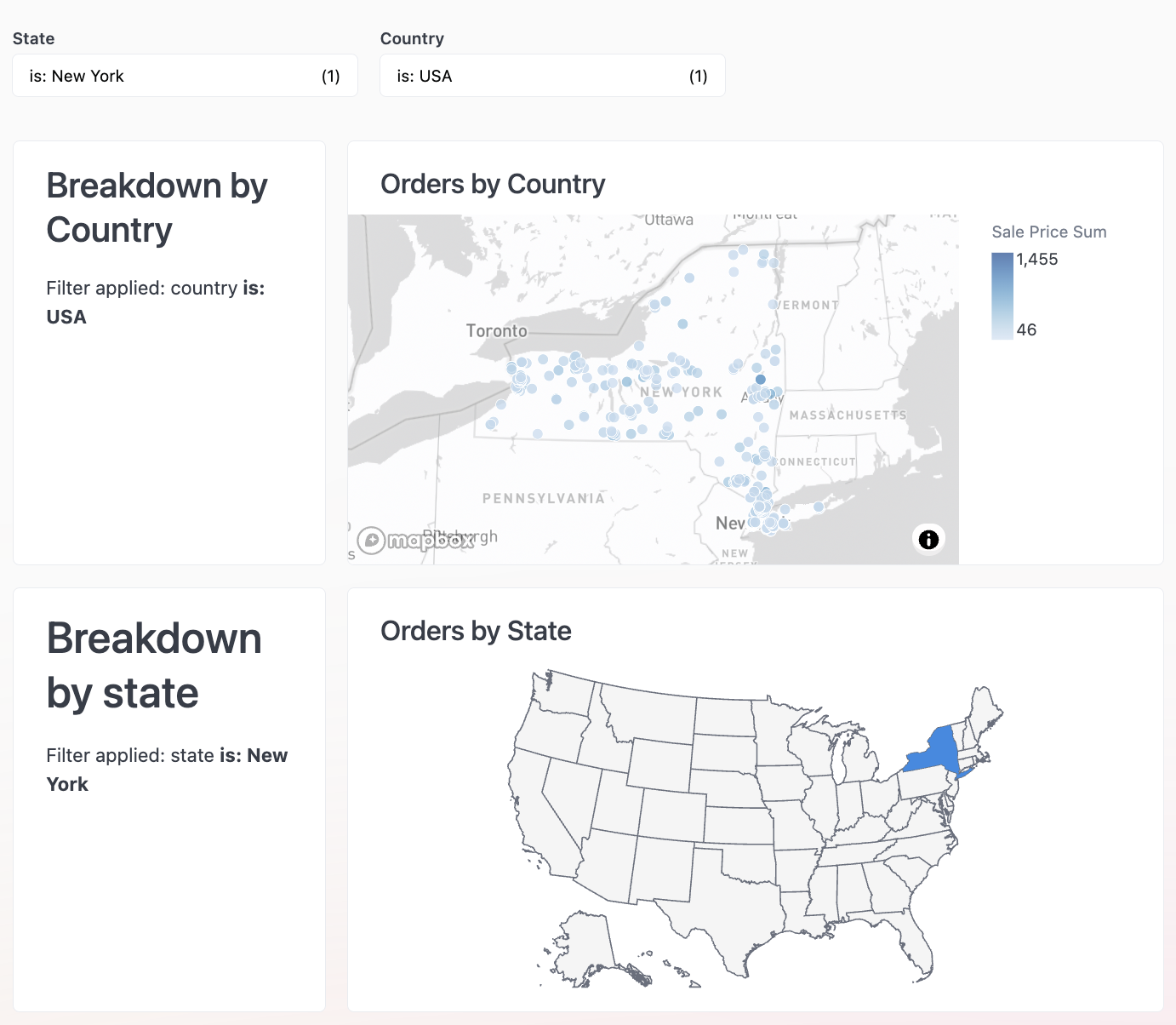
KPIs and Markdown Visualizations
Markdown visualizations (in the workbook) can be wired to reference specific values in the table, as well the filters via the rows returned:
There have been **{{result._totals._first.order_items.order_count.value}}** orders placed for **{{result._first.products.brand.value}}** in **{{result._first.users.state.value}}**, and the average selling price is **{{result._first.order_items.sale_price_average.value}}**.
See the 🗺📍 below for **{{result._first.products.brand.value}}** stores in the top selling city - **{{result._first.users.city.value}}, {{result._first.users.state.value}}**.
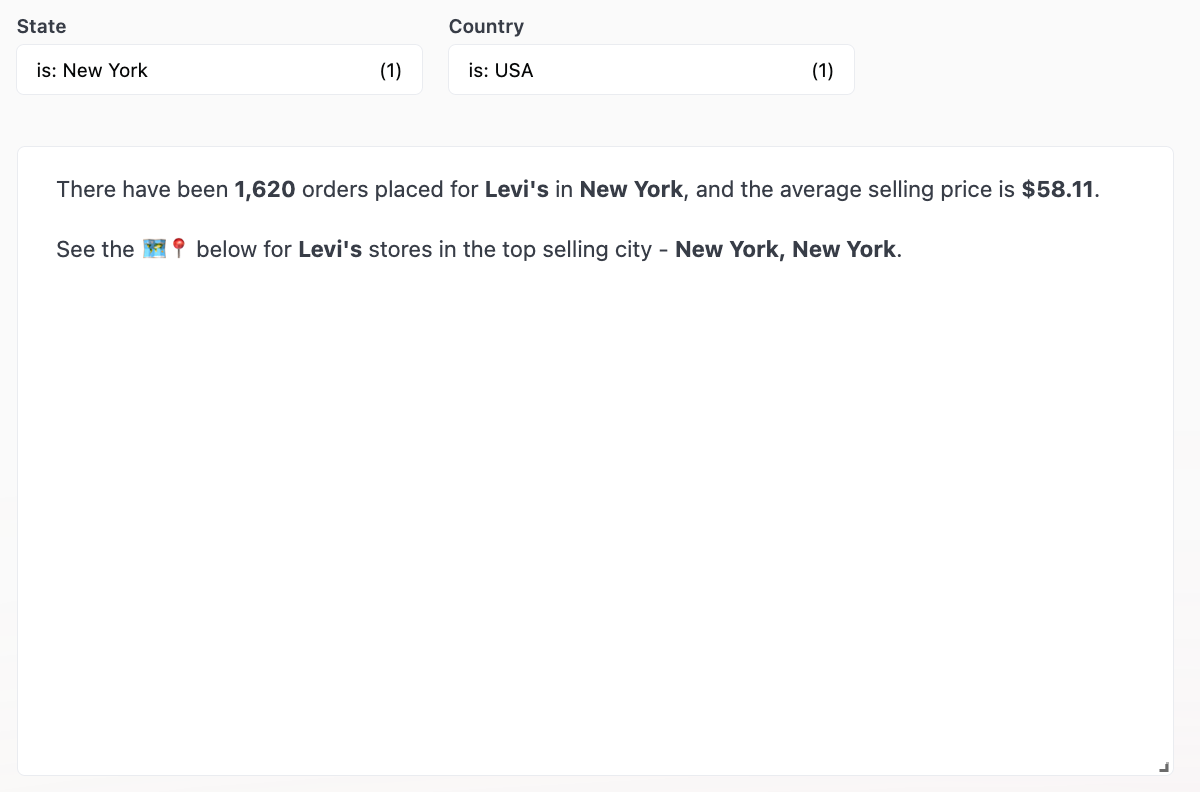
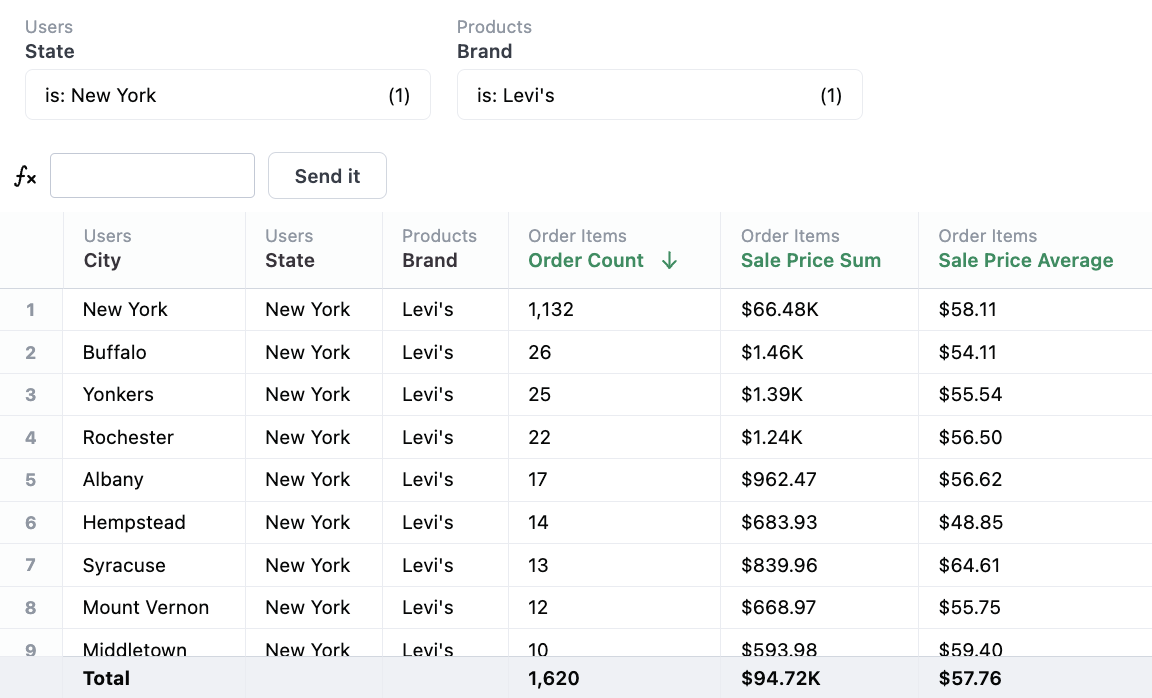
Iframes (via Markdown Visualization)
Similar to vanilla markdown tiles, iframes can be made dynamic as well, here using a Google Maps search with a dynamic URL:
<iframe src="https://www.google.com/maps/embed/v1/search?q={{result.0.products.brand.value_static}}+in+{{result._first.users.city.value_static}},{{result._first.users.state.value_static}}&key=AIzaSyCXfF4zpXaYkgVaBzj3oZUtmcDAxpdoOGk&" width="100%" height="100%" style="border:0;" allowfullscreen="" loading="lazy" referrerpolicy="no-referrer-when-downgrade"></iframe>

Visualization Axis Labels
Visualizations can also be made dynamic, here in the y-axis label to show summary values and the filter objects:
Order Count ({{result._totals.0.order_items.order_count.value}} Total Orders in {{result.0.users.state.value}})
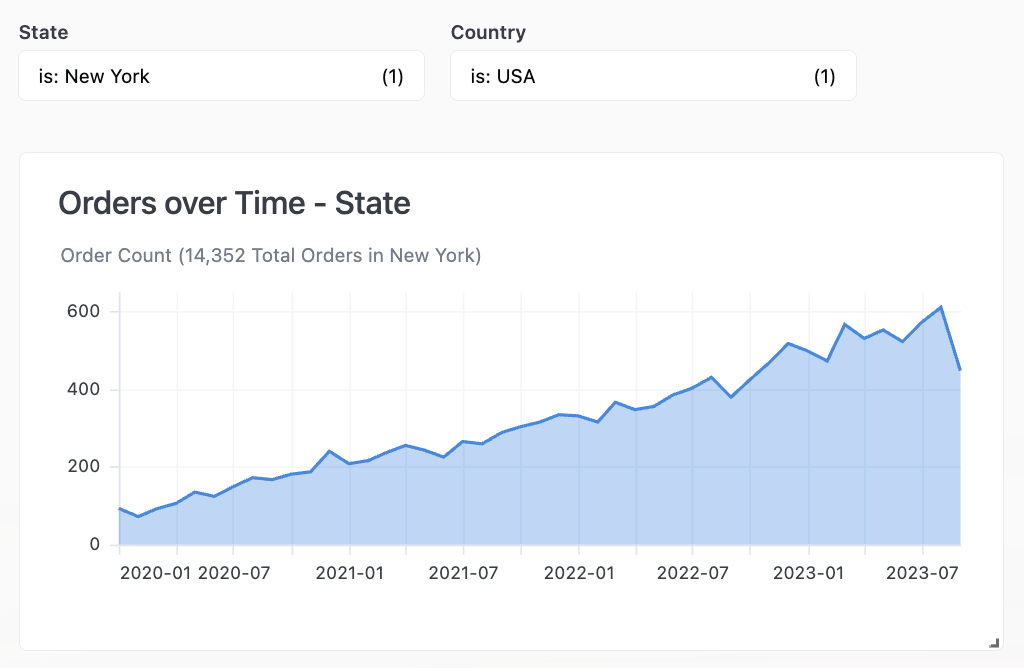
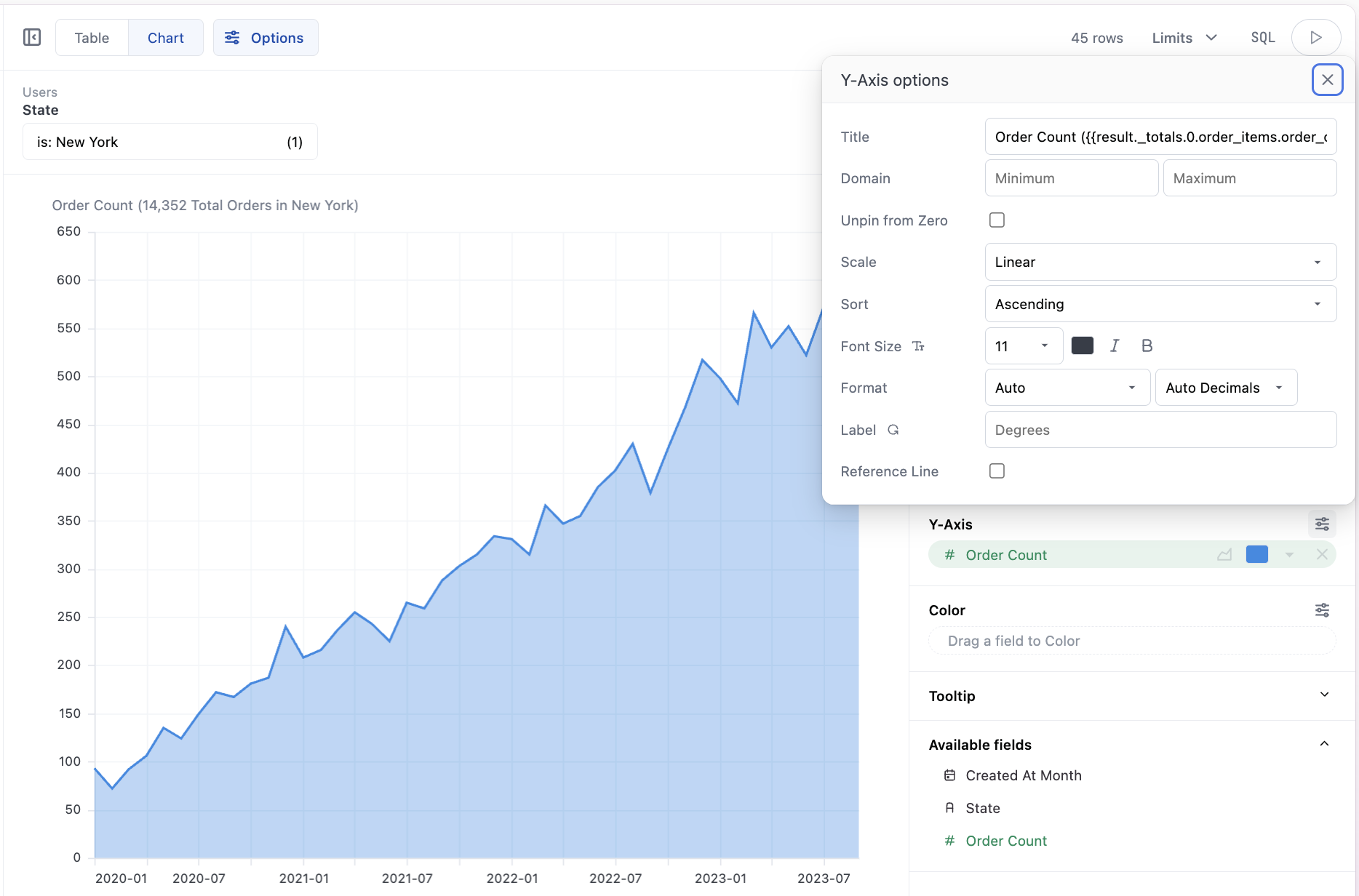
HTML Escaping
When using the {{ variable }} syntax, all variables are HTML escaped by default. If you want to return raw contents without escaping, use the triple mustache, ie. {{{ variable }}}.
For more specifics on syntax and gotchas, see the Mustache docs.
Markdown Syntax Reference
These mirror references in Markdown blocks
| Part of the query | Element | Example Syntax | Example Output |
|---|---|---|---|
| Field | View name | {{fields.order_items.sale_price_sum.view_label}} | Order Items |
| Field | Field name | {{fields.order_items.sale_price_sum.label}} | Sale Price Sum |
| Field | First row value | {{result._first.Female.order_items.sale_price_sum.value}} | $21.60K |
| Field | Last row value | {{result._last.Female.order_items.sale_price_sum.value}} | $28.82K |
| Field | Any row value (array syntax starting with 0) | {{result.5.Female.order_items.sale_price_sum.value}} | $31.29K |
| Field | Column total | {{result.totals._first.Female.order_items.sale_price_sum.value}} | $870.97K |
| Field | Row total (array syntax starting with 0) | {{result.5.row_total.order_items.sale_price_sum.value}} | $62.87K |
| Field | Grand total | {{result.totals._first.row_total.order_items.sale_price_sum.value}} | $1.63M |
| Filters | Label | {{filters.users.state.label}} | users.state |
| Filters | Summary | {{filters.users.state.summary}} | is: California,Virginia |
* Note: There are two options for returning the field value: .value will return an interactive value where drilling is enabled, .value_static will return just the raw value with no interactivity.